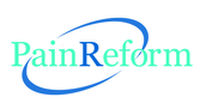预约演示
更新于:2025-05-07
Bunion
拇囊炎
更新于:2025-05-07
基本信息
别名 BUNION、Bunion、Bunion of great toe + [10] |
简介 Abnormal swelling of the inner aspect of the first metatarsal head affecting the first METATARSOPHALANGEAL JOINT. |
关联
10
项与 拇囊炎 相关的药物靶点 |
作用机制 SCNA阻滞剂 |
最高研发阶段批准上市 |
首次获批国家/地区 中国 |
首次获批日期2022-11-30 |
作用机制 NET抑制剂 [+1] |
在研机构 |
最高研发阶段批准上市 |
首次获批国家/地区 美国 |
首次获批日期2008-11-20 |
36
项与 拇囊炎 相关的临床试验NCT05831449
A Phase 3, Randomized, Double-Blind, Placebo- and Active-Controlled Study to Evaluate the Efficacy and Safety of CPL-01 in the Management of Postoperative Pain After Unilateral Distal First Metatarsal Bunionectomy With Osteotomy
Subjects receive study drug during bunionectomy and are followed for pain and opioid use, with the hypothesis that those who receive CPL-01 will have less pain and less opioid use than either control arm.
开始日期2023-05-22 |
申办/合作机构 |
NCT05602844
Randomised Controlled Trial Comparing the Outcome of the 3D-Printed Patient-Specific-Instrument Assisted Lapidus Fusion vs Conventional Lapidus Fusion for Surgical Correction of Hallux Valgus Deformity
RCT to compare the effectiveness of PSI assisted Lapidus surgery vs conventional Lapidus surgery in hallux valgus.
开始日期2023-04-01 |
申办/合作机构 |
NCT05773846
A Phase 3, Randomized, Double-Blind, Saline Placebo- and Active-Controlled, Multicenter Study to Evaluate the Analgesic Efficacy and Safety of Intra-operative Administration of PRF-110 Following Unilateral Bunionectomy
PRF-110 is a viscous, yellowish clear oily solution of ropivacaine intended for administration into surgical sites to provide post-operative analgesia. The pharmacokinetic profile for PRF-110 suggests that its effect could last up to 72 hours. This is A Phase 3, Randomized, Double-Blind, Saline Placebo- and Active-Controlled, Multicenter Study to Evaluate the Analgesic Efficacy and Safety of Intra-operative Administration of PRF-110 Following Unilateral Bunionectomy
开始日期2023-03-13 |
申办/合作机构  PainReform Ltd. PainReform Ltd. [+1] |
100 项与 拇囊炎 相关的临床结果
登录后查看更多信息
100 项与 拇囊炎 相关的转化医学
登录后查看更多信息
0 项与 拇囊炎 相关的专利(医药)
登录后查看更多信息
263
项与 拇囊炎 相关的文献(医药)2025-04-01·Foot & Ankle International
Optimal Target Angle in Oblique Diaphyseal Osteotomy of the Fifth Metatarsal for Symptomatic Bunionette: A Retrospective Analysis
Article
作者: Ikuta, Yasunari ; Adachi, Nobuo ; Ishibashi, Saori ; Nakasa, Tomoyuki ; Sakurai, Satoru ; Kawabata, Shingo ; Moriwaki, Dan
2025-01-01·Clinics in Podiatric Medicine and Surgery
A New Paradigm for Failed Bunions with Minimally Invasive Methods
Article
作者: Wong, David T
2024-12-01·Therapeutische Umschau. Revue therapeutique
Metatarsalgie.
Review
作者: Knupp, Markus ; Inglin, Fabienne
67
项与 拇囊炎 相关的新闻(医药)2025-04-23
SAN DIEGO, April 23, 2025 /PRNewswire/ -- Robbins LLP reminds stockholders that a class action was filed on behalf of all persons and entities that purchased or otherwise acquired Treace Medical Concepts, Inc. (NASDAQ: TMCI) securities between May 8, 2023 and May 7, 2024. The Company is focused on advancing the standard of care for the surgical management of bunion and related midfoot deformities.
For more information, submit a form, email attorney Aaron Dumas, Jr., or give us a call at (800) 350-6003.
The Allegations: Robbins LLP is Investigating Allegations that Treace Medical Concepts, Inc. (TMCI) Misled Investors Regarding Demand for its Primary Product
According to the complaint, during the class period, defendants failed to disclose that (1) competition impacted the demand for and utilization of its primary product, the Lapiplasty 3D Bunion Correction System, and (2) as a result, Treace Medical's revenue declined and the Company needed to accelerate its plans to offer a product that was an alternative to osteotomy (a surgical procedure that involves cutting and realigning a bone to improve its position or function). Plaintiff alleges that when the truth was revealed, the price of Treace Medical's stock fell nearly 63%, to close at $4.17 per share on May 8, 2024.
What Now: You may be eligible to participate in the class action against Treace Medical Concepts, Inc. Shareholders who want to serve as lead plaintiff for the class must file their papers with the court by June 10, 2025. The lead plaintiff is a representative party who acts on behalf of other class members in directing the litigation. You do not have to participate in the case to be eligible for a recovery. If you choose to take no action, you can remain an absent class member. For more information, click here.
All representation is on a contingency fee basis. Shareholders pay no fees or expenses.
About Robbins LLP: A recognized leader in shareholder rights litigation, the attorneys and staff of Robbins LLP have been dedicated to helping shareholders recover losses, improve corporate governance structures, and hold company executives accountable for their wrongdoing since 2002.
To be notified if a class action against Treace Medical Concepts, Inc. settles or to receive free alerts when corporate executives engage in wrongdoing, sign up for Stock Watch today.
Attorney Advertising. Past results do not guarantee a similar outcome.
SOURCE Robbins LLP
WANT YOUR COMPANY'S NEWS FEATURED ON PRNEWSWIRE.COM?
440k+
Newsrooms &
Influencers
9k+
Digital Media
Outlets
270k+
Journalists
Opted In
GET STARTED
专利侵权
2025-04-01
·微信
生物制药界这是要搞大事情呀,一场 “重磅炸弹” 式的狂欢派对可能马上就要开场咯!在最新出炉的年度报告里,Evaluate 那可是一口气列出了 2025 年有望获批的 10 种超牛潜在重磅药物。分析师们掐指一算,到本世纪末,这些 “潜力股” 药物的年销售额说不定能像火箭一样蹿到 290 亿美元!这数字,好家伙,几乎是去年前 10 名预测销售额的两倍呢。想当初,Evaluate 预测 2024年最有希望获批的药物,到 2028 年销售额也就 152 亿美元,这里面就有百时美施贵宝治疗精神分裂症的 Cobenfy、礼来对抗阿尔茨海默病的 Kisunla,还有 Madrigal 制药公司治疗 MASH 的 Rezdiffra,这仨在去年都成功获批上市啦。说起来,2025 年的这个预测总额,那在过去五年里可算是一骑绝尘,连 Evaluate 对 2022 年的乐观预测都得甘拜下风。当年分析师们预计 2022 年最受瞩目的那些药物,到 2026 年总销售额也就 269 亿美元。当时那名单里,既有对 Kisunla 的早期押注,也有礼来现在大火的 tirzepatide,也就是 Zepbound 和 Mounjaro,不过罗氏旗下基因泰克公司的阿尔茨海默病候选药物 gantenerumab 就没那么幸运了,在 2022 年底因为 3 期试验失败,直接凉凉。那为啥 2030 年的预测销售额能 “大爆发” 呢?原来是 Vertex 制药公司的一款新囊性纤维化药物冲在了前头。Vertex 在这领域那可是响当当的巨头,他家的 Vanza 三联疗法在 2024 年底就提前拿到了美国食品药品监督管理局(FDA)的 “入场券”,还被冠上了 Alyftrek 这个响亮的商业名。这三联组合药物简直就是 “别人家的孩子”,各方面都比它的 “前辈” Trikafta 强太多。Evaluate 预测,到 2030 年,Alyftrek 的年销售额能一路飙升到 83亿美元呢。今年名单上排第二的,嘿,还是去年的 “熟面孔”。第一三共和阿斯利康的 datopotamab deruxtecan 去年在预测名单里排第 5,可惜没得到 FDA 的批准。不过,这抗体药物偶联物在 2025 年可是打了个漂亮的 “翻身仗”,1 月就成功获批。现在它叫 Datroway,Evaluate 预测到 2030 年,它的销售额能接近 60 亿美元呢。能跻身前三甲的,还有 Vertex 的另一个 “秘密武器”:suzetrigine,它可能会给非阿片类疼痛管理重新定个标准。美国食品药品监督管理局已经把决定日期定在这个月底啦。要是获批了,这 NaV1.8 抑制剂可就成了 “数十年来首个进入市场的新型疼痛机制” 药物,厉害吧!鉴于它这开创性的潜力,分析师预计到 2030 年,suzetrigine 的年销售额能接近 30 亿美元。今年名单上的其他药物,来自赛诺菲、GSK、强生这些大公司,治疗的病症五花八门,有多发性硬化症、重度哮喘,当然,还有当下超热门的肥胖症和 2 型糖尿病领域。到底 Evaluate 的这些销售预测能不能美梦成真,这些药物是不是都能顺顺利利进入市场呢?这还得交给时间来验证。不过要是真能实现,那生物制药行业可不得迎来一场超级大繁荣,热闹得不得了!1.Vanza三联疗法 作者:Andrea Park 公司:Vertex制药 用途:囊性纤维化 预计2030年销售额:83亿美元Vanza三联药物(Vanza triple),一种由范扎卡夫托(vanzacaftor)、特扎卡夫托(tezacaftor)和氘代范扎卡夫托(deutivacaftor)组成的三联药物组合,于12月获得了美国食品药品监督管理局(FDA)的批准。Joseph Prezioso/AFP/Getty ImagesEvaluate列出的今年最受期待的药物中,Vertex制药的Vanza三联疗法是首个获得批准上市的药物。2024年12月底,Vertex获得了美国食品药品监督管理局(FDA)对其最新囊性纤维化治疗药物Alyftrek的批准,比计划的PDUFA日期提前了大约两周。该药物由vanzacaftor、tezacaftor和deutivacaftor组成的三联疗法,此前被称为Vanza三联疗法,是Vertex获得监管机构批准的第五种囊性纤维化跨膜传导调节剂(CFTR)。它是该系列中首个被设计为每天仅需服用一次的药物。FDA批准该药物用于6岁及以上、具有对治疗有反应的基因突变的囊性纤维化患者。正如Vertex首席执行官Reshma Kewalramani博士在公司批准公告中指出的那样,Alyftrek将Vertex的囊性纤维化业务扩展到31种额外的突变中。Vertex估计,这将使大约150名美国囊性纤维化患者首次有资格接受CFTR调节剂治疗。与Vertex的Trikafta相比,Alyftrek在降低汗液氯化物水平方面也有所改善。Trikafta于2019年成为首个获得FDA批准的囊性纤维化三联疗法,其标签覆盖了大约90%的囊性纤维化患者群体。Alyftrek的批准基于Vertex所称的“囊性纤维化领域有史以来最全面的3期关键项目”,该项目包括来自大约20个国家的1000多名患者。研究表明,在12岁及以上的患者中,Alyftrek在ppFEV1方面与Trikafta相当,ppFEV1是衡量一个人在一秒钟内能用力呼出的空气量的指标,它还在降低汗液氯化物方面优于其前身。与此同时,一项针对6至11岁儿童的研究证明了Alyftrek在年轻患者群体中的安全性。与Trikafta一样,Alyftrek也附带了一个关于肝脏毒性的黑框警告,要求在治疗的第一年进行频繁的肝脏功能监测,并在后续每年进行一次检查。在本月早些时候的年度J.P.摩根医疗保健会议上,Vertex首席运营官Stuart Arbuckle概述了Alyftrek将“特别吸引”的三个主要患者群体。这些患者包括:Trikafta未治疗的31种突变的患者、目前正在服用Trikafta且“希望获得更大的CFTR功能以及每天一次给药的便利性”的患者,以及据Arbuckle所说,全球大约有6000名已经停止使用CFTR调节剂的患者。分析师表示,尽管将患者转换为Alyftrek的过程将“相当直接”,但该药物在初期的影响力可能比2019年首次亮相的Trikafta要小。当时,Trikafta作为首个囊性纤维化三联疗法,其疗效远超Vertex之前的药物。即便如此,Evaluate预计Alyftrek到2030年的销售额将超过80亿美元,远高于名单上的其他条目。这一预测至少部分基于“公司现有囊性纤维化业务的成功”——该业务已经是一个价值100亿美元的巨头,Evaluate表示这预示着“另一个商业成功”。在批准时的公司证券备案中,Alyftrek的计划年标价为370269美元,比Trikafta的346048美元高出7%。随着Alyftrek在美国获得批准,Vertex现在正在等待更多的国际批准;该公司已经在欧盟、英国、加拿大、瑞士、澳大利亚和新西兰提交了申请。2.Datopotamab deruxtecan 作者:Nick Paul Taylor 公司:第一三共/阿斯利康 用途:肺癌和乳腺癌 预计2030年销售额:59亿美元美国食品药品监督管理局(FDA)最近接受了阿斯利康(AstraZeneca)提交的关于肺癌的申请,并将其纳入优先审评程序。第一三共和阿斯利康的TROP2导向药物datopotamab deruxtecan(Dato-DXd)可能是继Enhertu之后,该团队推出的下一个重磅抗体 - 药物偶联物(ADC)。然而,2023年因患者死亡引发的质疑在2024年加剧,因为合作伙伴遭遇了一系列挫折。去年,Dato-DXd在3期肺癌和乳腺癌试验中未能改善总生存期(OS)。当其制造商更仔细地查看肺癌数据时,第一三共的股价下跌,因为投资者开始理解比预期更糟糕的OS失败的含义。随着2024年的结束,合作伙伴撤回了在美国和欧洲用于二线肺癌患者的批准申请。在12月的一次活动中,第一三共全球精准医疗负责人Dale Shuster表示,肺癌试验“没有得到FDA的积极审查”。在Shuster发表讲话前不久,阿斯利康和第一三共分享了转向非小细胞肺癌(NSCLC)亚组的分析依据。对来自两项试验的EGFR突变患者的汇总分析发现,接受Dato-DXd治疗的人群的中位OS为15.6个月。3期试验整个人群的中位OS在Dato-DXd组为12.9个月,在对照组使用的化疗药物多西他赛组为11.8个月。FDA最近接受了肺癌申请的优先审查,预计将在7月12日之前对提交的申请做出决定。与此同时,阿斯利康和第一三共于1月17日获得了Dato-DXd的首次FDA批准,获得批准在不可切除或转移性HR阳性、HER2阴性乳腺癌中销售该ADC。吉利德科学公司的竞争对手TROP2 ADC Trodelvy已在乳腺癌中获得批准,但Dato-DXd将以Datroway的名称销售,被授权更早使用。虽然患者需要接受内分泌治疗和至少两种额外的全身治疗才能开始使用Trodelvy,但Datroway的标签允许在内分泌治疗和至少一种额外的全身治疗后使用。然而,肺癌是一个更大的机会,吉利德在去年3期试验失败后退出了二线竞赛。在努力赢得二线NSCLC患者亚组的批准的同时,阿斯利康和第一三共也在朝着一项3期试验的数据推进,该试验正在测试他们的ADC作为肺癌的一线治疗。AVANZAR试验的数据预计将在今年下半年公布。积极的AVANZAR数据将打开一个巨大的市场。吉利德正在与默克公司合作,仍试图将Trodelvy引入一线NSCLC市场,因此阿斯利康和第一三共有机会超越并率先推出该适应症中的首个TROP2导向ADC。Evaluate的预测表明,尽管Dato-DXd近年来遭遇了挫折,但分析师仍然对其充满信心,他们对2030年的预测比一年前的2028年预测高出41亿美元。接下来的12个月将大大有助于展示Dato-DXd是否能成为分析师预期的重磅炸弹。3.Suzetrigine 作者:Andrea Park 公司:Vertex制药 用途:急性疼痛和神经病理性疼痛 预计2030年销售额:29亿美元Vertex 的高管们在最近的 J.P. Morgan 医疗保健大会上讨论了公司的上市准备工作。照片由 David L. Ryan 拍摄,由《波士顿环球报》通过 Getty Images 提供。尽管Vertex的suzetrigine在2030年的销售预测远低于该公司另一款热门新药、位居榜首的Alyftrek的预测,但suzetrigine仍可能抢走其表亲的一些风头。这种非阿片类止痛药候选药物是一种NaV1.8抑制剂,旨在阻断钠通道中的疼痛信号,其批准将标志着“数十年来首个新型疼痛机制进入市场”,Evaluate如是说。FDA授予suzetrigine在中度至重度急性疼痛中的应用优先审查权,并将目标行动日期定于1月30日。Vertex去年公布的3期数据显示,在患者接受抽脂手术和拇囊炎手术后的48小时内,suzetrigine在改善疼痛水平方面显著优于安慰剂,并且具有良好的安全性。然而,该药物未能达到与广泛使用(且经常被滥用)的阿片类药物Vicodin相对的次要终点。尽管在抽脂手术患者中,suzetrigine相对于Vicodin具有数值优势,但在该组中未能达到统计学意义。在拇囊炎手术试验中,接受Vicodin治疗的患者比接受suzetrigine治疗的患者获得更大的疼痛缓解。尽管如此,凭借主要终点的胜利,Vertex继续推进suzetrigine在急性疼痛方面的应用。分析师预测该药物将有一个良好的市场启动,Leerink Partners将其2026年的销售预测定为惊人的8.66亿美元。在2025年J.P.摩根医疗保健会议上,Vertex公司确认其“已准备好上市”,计划在获得FDA批准后立即在美国推出suzetrigine。首席运营官Stuart Arbuckle表示,为此次推出做准备包括与政府和商业支付方以及零售药店连锁店进行讨论。“一旦患者获得该药物的处方,并前往其零售药店,我们当然要确保产品在那里。这些患者正处于急性疼痛中——如果产品不在货架上,他们将放弃该处方并获得其他药物的处方。”尽管Vertex尚未宣布suzetrigine的标价,但Arbuckle在JPM演讲中讨论了设定该价格的考虑因素。“我们希望确保我们将价格定在那个甜蜜点,既能让我们为患者提供药品,同时又能反映suzetrigine的临床价值,它在减少美国阿片类药物流行方面的成本抵消,同时也反映了我们为达到这一点所付出的数十年的巨大投资。”他说道。就可及性而言,Vertex预计在美国将受益于最近通过的《非阿片类药物预防国家成瘾法案》(NOPAIN),该法案旨在鼓励在临床环境中为Medicare患者使用非阿片类药物疼痛管理方法。在等待急性疼痛中suzetrigine的决定的同时,Vertex也在推进该候选药物在慢性疼痛中的应用,目前正在进行糖尿病周围神经病变和腰骶神经根病的研究。在后者的应用案例中,最近的一次更新吓到了一些投资者,并导致公司股价持续下跌,因为2期结果显示suzetrigine的表现与安慰剂相似,尽管这并非该研究的预期对照组。4.Aficamten 作者:Nick Paul Taylor 公司:Cytokinetics 用途:肥厚型心肌病 预计2030年销售额:28亿美元Cytokinetics 计划在2025年上半年发布一项试验的3期数据,该试验正在比较 aficamten 与β受体阻滞剂的效果。图片来自 iStock/ Getty Images Plus。大约一年前,aficamten出现在这个名单上的开头本应是“公司:诺华”。然而,关于收购Cytokinetics的谈判在最后一刻破裂,导致这家位于南旧金山的生物技术公司独自在美国和欧洲挑战百时美施贵宝的竞争对手心肌肌球蛋白抑制剂Camzyos。诺华只是在媒体报道中被提及为潜在买家,但Cytokinetics首席执行官RobertBlum承认与潜在买家的谈判已进入高级阶段,他在本月的J.P.摩根医疗保健会议上表示,“我们认为我们已经达成了一项协议”,但“由于我们不知道的原因,它没有发生”。在看到交易破裂后,Cytokinetics筹集了超过10亿美元来资助商业化。生物技术公司已在美国为阻塞性肥厚型心肌病提交了aficamten的批准申请,FDA计划在9月底做出决定,同时也在欧洲提交了申请。Cytokinetics计划在这两个市场自行商业化aficamten。赛诺菲拥有在中国的权利,该药物可能在今年获得批准,拜耳则负责日本。Blum承认,新进入药品销售领域的生物技术公司往往令人失望,他引用麦肯锡的数据表明,只有20%到30%的首次商业公司能够超过启动预期。而成熟公司则有40%到50%的时间超过预期。首席执行官通过比较他的生物技术公司和成功的首次启动者的特征,认为Cytokinetics可以成为赢家之一。“这些是拥有集中客户群体的公司。这些是拥有高利润率、支付方杠杆的公司。这些是能够提供定制化患者体验、依靠全渠道微观营销以确保精简的销售和营销基础设施的公司,”Blum说。“Cytokinetics……已经在这些相同的信条上投资了两到三年。”Cytokinetics计划今年在美国招聘125到150名销售代表。尽管这些代表将针对已经由Camzyos服务的市场,但Blum表示,“与当前进入者竞争并不重要。” 相反,首席执行官希望接触到“超过80%的患者,他们已被诊断、有症状、符合治疗条件且尚未接受治疗。”尽管如此,Cytokinetics对其竞争能力充满信心。据Blum说,“我们可以合理预期基于差异化特征的大部分市场份额。”Cytokinetics认为其药物候选产品在疗效、起效速度和安全性方面优于Camzyos。在获得批准后,传达这些差异的工作将逐步增加,但该公司近期的重点是针对医生和患者的疾病意识工作。这一切都不是免费的。Cytokinetics告诉投资者预计2024年的运营支出为4.4亿到4.7亿美元,Blum表示,随着今年晚些时候aficamten上市,这一数字将“增加”。这笔钱用于商业准备和aficamten的进一步开发。Cytokinetics计划在2025年上半年发布一项3期试验的数据,该试验将aficamten与β受体阻滞剂进行了比较。5.Brensocatib 作者:Andrea Park 公司:Insmed 用途:中性粒细胞介导疾病 预计2030年销售额:28亿美元Insmed 目前仅销售一种药物 Arikayce,但该公司手头的 brensocatib 可能会成为一款重磅炸弹药物。图片来自 LunaKate/Getty Images。Fierce Pharma的一项分析发现,2024年在FDA药品批准名单上,小型公司盖过了大型制药公司的风头。其中,Insmed正试图加入那些在行业中引起巨大轰动的小型、鲜为人知的生物技术公司的行列,该公司在2024年底向FDA提交了其brensocatib用于非囊性纤维化支气管扩张症(一种肺部疾病)的申请。随着申请现在处于监管审查中,Insmed在1月份的J.P.摩根医疗保健会议上表示,预计将在今年第三季度开始brensocatib的上市,前提是获得优先审查以及当然,该机构的最终批准。与此同时,Insmed还计划今年在欧盟、英国和日本提交额外的申请,如果brensocatib在每个地区获得绿灯,该公司希望在明年开始商业推广。支气管扩张是一种慢性疾病,气道壁因炎症和感染而增宽和增厚。据估计,仅在美国,每年就有35万到50万成年人受到影响。据Insmed称,FDA的批准将使brensocatib成为首个批准用于支气管扩张的治疗方法,也是首个批准的二肽基肽酶1(DPP1)抑制剂。去年,当Insmed公布3期结果显示在减少肺部加重的主要终点上取得重大胜利时,该药物给投资者和分析师都留下了深刻印象。在超过1700名分为两个剂量组的患者中,10毫克组的患者与安慰剂相比减少了21%的加重,而25毫克组的患者减少了19%。除了在试验的几个次要终点上取得额外的胜利外,接受brensocatib治疗的患者还经历了比安慰剂组更少的治疗相关不良事件。在等待支气管扩张中使用brensocatib的决定的同时,这家生物技术公司还在推进将该药物应用于其他多种中性粒细胞介导疾病,这是一组受最常见类型的白细胞活动影响的炎症性疾病,包括糖尿病、狼疮、多发性硬化症、类风湿关节炎等。作为一种DPP1抑制剂,brensocatib旨在抑制一种激活白细胞中中性粒细胞丝氨酸蛋白酶(NSPs)的酶。尽管NSPs通常有助于调节炎症和消灭病原体,但在某些疾病中,它们被过度激活,导致炎症和器官破坏。Insmed在JPM会议上表示,一项针对无鼻息肉的慢性鼻 - 鼻窦炎的2b期试验已完成其目标入组的近70%,预计在年底前发布主要数据。12月,该公司在一项针对化脓性汗腺炎的单独2期试验中随机分配了第一名受试者。Evaluate预测,到2030年,brensocatib的销售额可能达到28亿美元。这将为Insmed带来巨大利益,该公司目前只销售一种获批药物Arikayce,并预计2024年全年收入略高于3.63亿美元。6.Tolebrutinib 作者:Andrea Park 公司:赛诺菲 用途:多发性硬化症 预计2030年销售额:14亿美元Sanofi 最初在2020年以37亿美元收购 Principia Biopharma 时获得了这种 BTK 抑制剂。Tolebrutinib的路途漫长而曲折,但赛诺菲终于接近潜在的FDA批准。这家法国制药公司最初在2020年以37亿美元收购Principia Biopharma时获得了这种BTK抑制剂。此次收购使赛诺菲完全拥有了tolebrutinib,该公司与Principia合作开发了这种药物,并计划迅速将其推进到几个3期试验中。然而,2022年,FDA因报告的药物诱导性肝损伤病例,对tolebrutinib在多发性硬化症和重症肌无力的3期试验实施了部分临床限制。到2023年初,赛诺菲决定放弃重症肌无力项目,同时继续在多发性硬化症领域推进。该药物的竞争对手也面临类似的挫折,例如罗氏的fenebrutinib和Merck KGaA的evobrutinib,近年来都因肝毒性问题面临部分临床限制。Merck最终在去年决定放弃evobrutinib,因为它在两项多发性硬化症试验中未能胜过赛诺菲的Aubagio。尽管赛诺菲最近在三项多发性硬化症试验中的两项报告了tolebrutinib的失败,但该药物似乎仍在竞赛中领先,因为它在2024年12月成为首个获得FDA突破性疗法认定的用于多发性硬化症的BTK抑制剂,这可能会加速其监管审查。赛诺菲计划将tolebrutinib提交给FDA,用于非复发性继发性进展型多发性硬化症(nrSPMS)。在突破性疗法认定公告中,该公司确认监管提交文件“目前正在美国最终确定,并准备提交给欧盟”。在年初的J.P.摩根医疗保健会议上,赛诺菲高管对FDA提交的确切时间线保持谨慎,但研发负责人Houman Ashrafian博士表示:“Tolebrutinib很可能在今年推出用于SPMS——取决于监管审查和批准,但这正是我们的信心和期望——今年晚些时候,[原发性进展型多发性硬化症]将紧随其后。”Evaluate预计,如果获批,该药物将成为首个专门用于治疗nrSPMS的疾病修饰疗法,其2030年的销售额将达到14亿美元。Ashrafian在JPM会议上表示,原发性和继发性进展型多发性硬化症中巨大的未满足需求将使赛诺菲能够“与tolebrutinib实现良好的平稳增长动态”,并占据“这个230亿美元市场的重要份额”。据赛诺菲称,突破性疗法认定是基于其在nrSPMS中的HERCULES 3期试验结果,该试验表明,与安慰剂相比,tolebrutinib将六个月确认残疾进展的时间延迟了31%。该公司指出,在接受tolebrutinib治疗的患者中,略高于4%的人出现肝酶升高,而安慰剂组为1.6%,尽管除了一例之外,所有病例都在没有进一步医疗干预的情况下得到了解决。赛诺菲在9月初公布了HERCULES试验结果,当时它还报告了在复发性多发性硬化症的两项3期试验中tolebrutinib的两次失败。在这两项GEMINI试验中,BTK抑制剂未能在减少复发方面胜过获批药物Aubagio,尽管赛诺菲确实强调了tolebrutinib组在残疾发作方面的“显著延迟”。7.Mazdutide 作者:Nick Paul Taylor 公司:信达生物/礼来 用途:2型糖尿病和肥胖症 预计2030年销售额:13亿美元Eli Lilly 拥有在中国以外地区开发和销售 mazdutide 的权利。图片来自 iStock/ Getty Images Plus。礼来公司大获成功的GLP-1药物研发引擎即将推出又一款重磅炸弹。但这一次,信达生物将成为短期受益者,这家中国生物技术公司正在等待其双重GLP-1/胰高血糖素受体激动剂mazdutide在其本土市场的两种适应症中获批。信达生物在2019年获得了mazdutide的中国权利。去年,该公司报告了两项3期试验的成功,随后在中国提交了批准申请,以帮助肥胖或超重的成年人进行体重管理和控制2型糖尿病患者的血糖。这些申请可能会获得mazdutide的全球首批批准,并使其成为挑战中国GLP-1市场的有力竞争者。如果获批,mazdutide将成为首个用于糖尿病和肥胖症的双重GLP-1/胰高血糖素受体激动剂。激活胰高血糖素受体可能会增加能量消耗,从而在肝脏、大脑以及白色和棕色脂肪组织中引发变化,这些变化与GLP-1激活所触发的能量摄入减少相辅相成。信达生物报告称,在一项针对中国成年人的试验中,第48周时体重减轻了18.6%。扩大mazdutide预期标签的工作已经开始。信达生物正在针对肥胖症进行一项9毫克剂量的后期试验,最初提交批准的是6毫克剂量。另一项后期试验将该药物候选产品与诺和诺德的司美格鲁肽(Ozempic和Wegovy中的活性成分)进行了对比,试验对象为患有2型糖尿病和肥胖症的人群。在肥胖症伴代谢功能障碍相关脂肪性肝病、青少年肥胖症和阻塞性睡眠呼吸暂停的后期试验正处于计划阶段。信达生物的早期研发管线还包括针对代谢功能障碍相关脂肪性肝炎(MASH)和射血分数保留型心力衰竭的研究。向MASH领域的扩展得到了一项研究的支持,该研究显示mazdutide在第48周时使肝脏脂肪减少了80%。在1月份的J.P.摩根医疗保健会议上,信达生物首席执行官Michael Yu博士表示,这些数据“远远好于FDA对MASH的批准”,他指的是Madrigal的Rezdiffra,该药物去年获得了该适应症的首个FDA批准。Yu表示,他将mazdutide视为一种改善代谢和让人们更健康的方法,而不仅仅是一种减肥药。信达生物在2024年致力于扩大其心血管和代谢团队,为mazdutide和teprotumumab(安进在中国境外销售为Tepezza的甲状腺眼病疗法)的推出做准备。礼来拥有mazdutide在中国以外的权利,但这家大型制药公司能否将该候选药物推向市场,将取决于其能否超越tirzepatide(Mounjaro和Zepbound中的活性成分)所设定的标准。今年,礼来对mazdutide的前景可能会更加明朗,因为一项2期试验即将在未来几个月结束。该公司已招募了179名患者参加该试验,主要使用美国的试验点。8.Depemokimab 作者:Andrea Park 公司:GSK 用途:重度过敏性哮喘 预计2030年销售额:12亿美元GSK 的 depemokimab 预计将首先提交用于治疗重度哮喘和伴有鼻息肉的慢性鼻窦炎的监管文件。GSK预计depemokimab将为其IL-5产品系列带来可观的收益——Evaluate的销售预测似乎也支持这一预测。在本月旧金山举行的J.P.摩根医疗保健会议上,depemokimab被列入GSK 2025年预期批准的五种药物的“重大价值解锁”层级(PDF)。正如首席执行官EmmaWalmsley在演讲中解释的那样,考虑到depemokimab预期获得FDA批准以及Nucala可能扩展到慢性阻塞性肺病(COPD)的标签,该公司将IL-5产品系列的峰值销售潜力定在超过40亿英镑(约合49亿美元)。Depemokimab是一种单克隆抗体,可阻断人白细胞介素-5(IL-5)与其受体的结合。它针对的是嗜酸性粒细胞相关疾病,当身体释放过多的嗜酸性粒细胞(一种白细胞)时,会导致炎症和组织损伤。这种长效药物每六个月才需给药一次——这比赛诺菲和再生元的Dupixent、诺华的Xolair以及GSK自身的Nucala等竞争对手有了很大的改进,后者的典型给药周期都在两周到四周之间。据GSK称,近90%的患者表示他们更倾向于每六个月给药一次的方案。Walmsley表示,首先,depemokimab的预期推出可能会在治疗重度哮喘和慢性鼻 - 鼻窦炎伴鼻息肉(CRSwNP)方面带来一个“质的飞跃”。据GSK研究,目前只有三分之一的潜在哮喘患者正在接受生物制剂治疗。“这种药物不仅为患者提供了一年两次的给药选择,而且我们相信它还将扩大整个哮喘生物制剂市场,”她解释道。尽管GSK尚未确认是否已向美国监管机构提交depemokimab的申请,但在去年秋天分享该药物的几项3期试验数据时,该公司表示所有四项研究的结果“将用于全球范围内的监管申报。”这些研究包括两项针对重度哮喘和两项针对CRSwNP的研究。在重度哮喘方面,SWIFT-1和SWIFT-2试验共招募了760名患有重度哮喘和2型炎症的成人和青少年。在一年的时间里,与安慰剂相比,depemokimab显示出可将哮喘加重减少54%。然而,次要终点的结果则更为复杂。在需要住院或前往急诊室的临床显著加重方面,实验组减少了72%,但在生活质量、哮喘控制以及患者能够呼出的空气量方面,与安慰剂组相比,该药物的效果并不理想。当时,GSK全球呼吸/免疫学研发负责人Kaivan Khavandi博士向Fierce Biotech证实,次要终点的未达预期并不会“改变我们的策略”,因为“众所周知,预防加重是最重要的临床结果。”与此同时,在针对528名CRSwNP患者的ANCHOR-1和ANCHOR-2试验中,depemokimab达到了两个主要终点:与安慰剂相比,在第52周时改善总鼻内窥镜鼻息肉评分,以及在第49至52周时改善平均鼻腔阻塞评分。在depemokimab针对重度哮喘和CRSwNP的努力之后,针对嗜酸性粒细胞性肉芽肿性多血管炎和高嗜酸性粒细胞综合征的3期试验也在进行中。此外,据Walmsley在JPM会议上的演讲,GSK计划今年开始一项针对depemokimab的COPD 3期试验。9.MenABCWY疫苗 作者:Nick Paul Taylor 公司:GSK 用途:预防A、B、C、W-135和Y群脑膜炎球菌感染 预计2030年销售额:12亿美元GSK 计划在其脑膜炎疫苗产品组合中实现约24亿美元的峰值销售额。GSK即将在与辉瑞争夺脑膜炎球菌疫苗市场的竞争中开辟新战线。这家英国公司已经销售针对A、C、W-135和Y群以及B群脑膜炎球菌的疫苗。通过GSK-3536819,GSK将Menveo和Bexsero的抗原成分合并为一种疫苗。FDA计划在2月14日决定是否批准GSK的五合一疫苗候选产品。如果该机构在情人节当天批准GSK-3536819,这种五价疫苗将进入一个已经由辉瑞的Penbraya服务的市场。FDA在2023年批准了Penbraya。与GSK一样,辉瑞也销售两种单独的疫苗,Nimenrix和Trumenba,它们共同覆盖了其五价疫苗相同的五种成分。GSK的目标是使其脑膜炎疫苗产品组合的峰值销售额达到约20亿英镑(约合24亿美元)。该公司现有的产品组合在2024年的前九个月实现了11亿英镑的销售额,主要得益于Menveo和Bexsero的推动。推出五价疫苗可能会推动该产品组合的增长,延续2024年前九个月销售额增长16%的势头。然而,关于五合一疫苗在长期内将如何融入疫苗接种时间表的问题仍未得到解答。2023年,美国免疫实践咨询委员会(ACIP)表示,当需要同时接种四价和B群脑膜炎球菌疫苗时,辉瑞的Penbraya可以用于10岁及以上的人群。该建议还详细说明了对于需要针对所有五种细菌类型进行保护的人群的标准三剂方案,患者从11岁开始接种四价疫苗,然后从16岁开始,要么再接种一剂四价疫苗加上B群脑膜炎球菌疫苗,要么接种一剂五价疫苗,随后在六个月后再接种一剂B群脑膜炎球菌疫苗。根据这些建议,一位分析师曾向辉瑞提问(PDF):“如果[五价]疫苗实际上只用于三剂中的第二剂,这是否会显著减少您预期的商业机会?”对此,时任辉瑞首席商务官的Angela Hwang表示,该公司可以在2024年向ACIP提供更多数据,这将使他们“有第二次机会,从而实现我们的峰值销售”——尽管到目前为止,2023年的建议仍然有效。辉瑞尚未开始公布Penbraya的销售额。在2024年第三季度,该公司将脑膜炎球菌疫苗收入归入多个未具名的初级保健产品所创造的6.52亿美元中(PDF)。辉瑞的四价疫苗Nimenrix和B群脑膜炎球菌疫苗Trumenba在2023年分别创造了1.79亿美元和1.26亿美元的收入。尽管GSK的脑膜炎球菌疫苗业务规模更大,但与辉瑞的Penbraya一样,其五价疫苗的接受程度将受到ACIP建议的影响。五合一疫苗的依据在于它们减少患者接受注射次数的潜力,以及增加对所有细菌菌株具有保护作用的人数。10.Nipocalimab 作者:Nick Paul Taylor 公司:强生 用途:重症肌无力及其他自身免疫性疾病 预计2030年销售额:12亿美元在全身型重症肌无力(generalized myasthenia gravis)中获得批准可能是 nipocalimab 系列授权的开始。图片来自 Angus Liu/Fierce Pharma。Nipocalimab是强生公司的一项重大赌注。这家大型制药公司在2020年以65亿美元收购Momenta Pharmaceuticals时获得了该资产,并随后开展了一个广泛的R&D项目,以验证其对FcRn阻断代表一个“通路中的管线”的信念。在2025年,强生可能会开始收回部分投资。2025年初,FDA接受了对nipocalimab在重症肌无力(gMG)中的批准申请,并进行了优先审查。尽管已有其他FcRn阻断剂可供选择,但强生还是为该抗体获得了快速上市通道:argenx于2021年获得了其FcRn药物Vyvgart的FDA批准,并随后获得了其皮下注射版本在两个适应症中的批准,而UCB的Rystiggo于2023年进入市场。与argenx或UCB相比,强生有望获得更广泛的标签。Argenx在抗AChR抗体阳性的人群中获得了FDA批准,而UCB的标签涵盖了对AChR或MuSK抗体阳性的患者。强生则更进一步,纳入了对AChR、MuSK和LRP4抗体阳性的患者。这些纳入标准使强生能够将nipocalimab定位为治疗最广泛gMG患者群体的药物,并获得优先审查。然而,大多数gMG患者已经符合Vyvgart和Rystiggo的治疗条件,因为高达90%的gMG患者存在抗AChR抗体。区分强生试验的LRP4阳性患者占病例的5%。在gMG中获批可能是nipocalimab一系列授权的开始。强生正在针对胎儿和新生儿溶血病、温抗体自身免疫性溶血性贫血和慢性炎症性脱髓鞘性多神经病进行3期试验。2期试验名单包括针对类风湿关节炎、系统性红斑狼疮和干燥综合征的研究。广泛的R&D项目建立在阻断FcRn可降低循环免疫球蛋白G(IgG)抗体水平而不影响其他免疫功能的证据之上。IgG抗体介导了一系列自身免疫性疾病,这使得强生及其竞争对手得出结论,FcRn阻断是一个“通路中的管线”。然而,argenx在gMG以外领域扩展的努力受挫,引发了对FcRn药物能够广泛使用的怀疑,该公司在2023年因出血性疾病和一组慢性大疱性疾病而遭遇失败。该公司正在研究其静脉注射产品用于出血性疾病——免疫性血小板减少症,并有望在明年报告数据。UCB也在测试Rystiggo用于其他适应症,而Immunovant正在研究其FcRn候选药物用于gMG、格雷夫斯病、甲状腺眼病和慢性炎症性脱髓鞘性多神经病。强生的目标适应症可能会在某些情况下使nipocalimab避开竞争对手的FcRn阻断剂,但它将在类风湿关节炎等疾病中面临具有不同机制的药物的竞争。参考资料:https://www.fiercepharma.com/marketing/top-10-most-anticipated-drug-launches-2025识别微信二维码,添加生物制品圈小编,符合条件者即可加入生物制品微信群!请注明:姓名+研究方向!版权声明本公众号所有转载文章系出于传递更多信息之目的,且明确注明来源和作者,不希望被转载的媒体或个人可与我们联系(cbplib@163.com),我们将立即进行删除处理。所有文章仅代表作者观不本站。
临床3期医药出海
2025-03-10
·知识分子
3.10
知识分子
The Intellectual
首都医学科学创新中心资深研究员
首都医科大学公共卫生学院教授
导读
✚
●
○
你好,我是王立铭。
2025年3月,第七十三期《巡山报告》又和你见面了。
从2019年3月《巡山报告》专栏开始,这已经是我为你巡山的第7个年头了。不管对人生还是对生物医学领域来说,6年都算挺长的一段时间,足以让我们观察到很多富有意义的变化。这几年来,我们讨论过的很多话题,都在以各种各样的方式继续演化和展开。我们《巡山报告》本身,可能也是如此。
过去这个月,我在高频率的使用各种AI模型,特别是DeepSeek的深度思考模型和OpenAI的Deep Research功能,确实也感觉在绝大多数时候,AI已经能非常好的理解人类前沿研究的具体进展,也能快速写出让人满意的总结报告。从这个角度来说,我自己倒是需要好好琢磨下未来咱们的《巡山报告》,是不是也需要再做个自我进化,至少应该提供AI暂时还提供不了的信息和洞察吧!
撰文 | 王立铭
● ● ●
言归正传。
这期报告的主题是2025年1月30日刚刚在美国获批的一款止痛药——美国Vertex(福泰)公司开发的Suzetrigine(通用名),曾用名VX-548)。
止痛药物你肯定不陌生。我们发烧时常用的退烧药阿司匹林、布洛芬和对乙酰氨基酚,都是非常常用的止痛药。
顾名思义,止痛药指的就是能够缓解疼痛感觉的药物。从短期缓解牙痛和痛经,到对抗顽固的慢性关节痛和偏头痛,甚至到抵抗常人难以忍受的癌症痛,止痛药在医学上有着非常广阔的使用场景和临床价值。2024年,全球止痛药市场的规模已经超过700亿美元,并且还在持续快速增长 [1]。
与此同时,止痛药却也是一个充满争议和挑战的领域,人们期待更好、更新的止痛药,已经太久太久了。
想要说清楚这个问题,我们得先看看为什么会有疼痛,以及止痛药到底有哪些。
和视觉、听觉类似,痛觉也是一种从外向内的完整感觉系统。人体全身都分布着专门感知各种痛觉信号的痛觉神经元,它们能检测诸如高温、针刺、辣椒等危险信号,并把这些信号通过脊髓传导到大脑,让人体产生相应的反应 [2]。
从进化意义上说,痛觉本身是一种重要的生存警报,能让动物意识到伤害和危险,避免使用受伤的身体部位,避免二次伤害,多多注意休息。
不过,既然现在具体的疾病能更好的被现代医学管控,于是我们很多时候还是宁可把这个生存警报的音量调小一些,让自己过得更舒服一些。而如果痛觉这个警报机制被错误开启或者错误放大,引起难以忍受的疼痛,甚至严重影响身体和心理健康,就更需要医疗手段来加以遏制了。
顺便插句话,因为历史和文化的原因,中国患者对使用止痛药往往非常谨慎乃至抗拒,这可能也是需要正视的一大医学问题。
粗略来说,止痛药有两个最主要的门类:
一个是所谓非甾体类抗炎药(NSAID,non-steroidal anti-inflammatory drugs),布洛芬和阿司匹林都属于这个大类。这类药物的作用机制类似,都是抑制具体疼痛部位的环氧合酶蛋白活性(特别是环氧合酶-2),减少前列腺素(Prostaglandin)的合成。
前列腺素本来是人体正常分泌的一种激素,有各种生物学功能。在人体某个部位受伤或者发炎的时候,前列腺素会大量合成分泌,帮助机体自我修复。但前列腺素有一个很让人挠头的作用,就是会同步让附近负责感知疼痛的痛觉神经元更加敏感,于是难以忍受的疼痛就随之而来 [2]。
NSAID这类药物已经经历了人类世界的长期使用,只要不过量,安全性是非常有保障的。所以,现在它们都被归入非处方药进行管理,我们可以方便的在药店和超市里买到。但它们也有自己的问题。比如,从上面的原理描述就能看出,它们主要的作用是遏制人体外周部位由于发炎和外伤引起的疼痛,对于主要由神经系统本身问题引起的疼痛,比如偏头痛,效果就不尽如人意。
另一大类是阿片类止痛药,代表药物有吗啡、芬太尼、可待因,乃至臭名昭著的海洛因。和NSAID不同,这类药物直接作用在脊髓和大脑中,结合痛觉传导通路上的阿片受体蛋白(特别是阿片mu受体),遏制疼痛信号的传输和痛觉的产生 [4]。
相比NSAID,阿片类止痛药的镇痛效果要强得多,但问题也更加突出:它们往往有更严重的副作用,比如呼吸抑制,而且非常容易引起药物成瘾,过量使用还很容易致命。因此,人们往往只在那些确实难以忍受的剧烈疼痛中,比如癌症痛和手术后的剧烈疼痛期,才使用这些药物改善患者的生存质量。
我想你可能也注意到了,美国总统川普在两任任期中都不断提到美国的芬太尼危机,根源就是阿片类止痛药的滥用和成瘾已经成为威胁美国社会的严重危机之一。
芬太尼是一款强效的阿片类止痛药,光是在2023年一年,美国就有超过74000人死于芬太尼过量使用,这个数字甚至超过了美国因车祸和枪击而死的人数。如果你读过美国副总统万斯的自传《乡下人的悲歌》,你会更直观的感受到阿片类止痛药的滥用对美国底层社会造成的深远伤害。
当然,我要强调一句:问题是真问题,但把这个问题甩锅给中国,指责中国是造成美国芬太尼危机的推手,是无论如何说不通的。和美国相反,中国可能是世界上对阿片类止痛药监管最为严格的国家。究其根源,美国临床实践中对阿片类止痛药的处方太过宽松,对相关药品的市场推广和使用缺乏有效监管,可能才是最重要的原因。
无论如何,开发更新、更安全的止痛药都是公认的重要任务。但在过去二三十年间,这个任务却屡遭挫折。
从监管环境来说,在芬太尼危机的大背景下,各国监管机构对于有潜在成瘾性的止痛药都高度谨慎。这当然是对的,但也会大大增加药物开发的难度和成本。
从科学机制上说,作用于中枢神经系统的止痛药很难完全避免成瘾等副作用,而作用于外周器官的止痛药又缺乏特异性足够好的靶点。
比如,在2017年,美国药监局批准了一款同样作用于阿片u受体但副作用较小的止痛药Olynvx上市。但这款药物仍然有明确的成瘾性,市场接受度不高。2025年初,开发这款药物的公司甚至主动将其退市 [5]。
再比如,美国辉瑞公司曾经开发了一款作用于外周的止痛药Tanezumab。这是一款靶向神经生长因子(NGF, nerve growth factor)的单抗类药物,3期临床试验显示对骨关节炎引起的疼痛有效。但同时它也会引发关节损伤等严重副作用,患者甚至需要做关节置换手术,因此它的上市申请在2021年正式被美国药监局拒绝 [6]。
在接连不断的失败中,钠离子通道Nav家族是少数持续被人们寄予厚望的全新镇痛靶点。
人体中有9个同类型的钠离子通道蛋白,分别被命名为Nav1.1-1.9,其中1.7,1.8,1.9三个蛋白主要分布在和痛觉相关的外周神经系统中,特别是脊髓中传导痛觉的背根神经节 [7]。
更为重要的是,人类遗传学研究也已经发现,如果人体天然携带这三个基因的突变,这些人的痛觉会出现异常 [8]。以Nav1.8为例,如果出现了功能增强的变异,人会对痛觉异常敏感;如果它们出现了失去功能的变异,人则可能会彻底失去痛觉 [9]。
具体而言,Nav1.8的正常功能是让传导痛觉的神经元更加敏感和活跃,能够以很高的频率将痛觉信息从外周器官传入大脑。这就提示我们,可以设计药物靶向Nav1.8这个钠离子通道蛋白,来开发新一代的止痛药。
但靶向Nav蛋白却有一个天生的技术障碍。Nav属于一个庞大的钠离子通道家族,功能广泛多样,结构还高度相似。这样一来,靶向某一个Nav——比如Nav1.8——的药物就很容易同步影响其他通道的功能。这是一个需要通过大量筛选和高超的化学手段加以解决的技术难题。
这期巡山开头我们介绍的这款药物正是一次非常不错的尝试。
福泰公司的科学家们通过大规模的药物筛选和改造,首先得到了一款能比较特异的抑制Nav1.8,但对其他钠离子通道影响较小的药物VX-150(选择性超过了400倍) [10],并且在早期临床开发中证明了它的镇痛效果。但在后续大规模临床试验中,这款药物因为各种因素表现不佳而没有继续推进。
并不气馁的福泰公司在VX-150的基础上继续改造开发,得到了对Nav1.8抑制效果更强(增强了约50倍),对其他钠离子通道影响更小的药物分子VX-548(选择性超过了31000倍) [11]。
2023年8月,VX-548的两项2期临床试验结果发表 [12]。这次发表的数据包含303名患者入组的腹壁整形手术试验,以及274名患者入组的拇囊炎切除手术试验的结果。在这些急性疼痛的患者中,口服VX-548都能快速缓解疼痛,效果大大好于安慰剂组。
值得注意的是,在拇囊炎这个临床研究中,起码在用药几个小时的时间窗口里,VX-548的镇痛效果看起来仍然比不上阿片类止痛药,但考虑到后者的成瘾性危险,这种差异也许也是可以接受的。
基于这些研究数据,2025年初,美国药监局批准了这款药物正式上市,用于治疗成年人的中度和重度急性疼痛。就像咱们在开头说的那样,这是20多年来第一款全新机制的止痛药上市。
同时,福泰公司还在积极探索这款药物在各种疼痛适应症中的表现,特别是慢性疼痛。要知道,相比急性疼痛,慢性疼痛的患者人群更大、更缺乏安全有效的药物。
但就在2024年12月,福泰公布了这款药物在坐骨神经痛的2期临床数据 [13]。这个数据就没有那么亮眼了:VX-548仍然能有效的缓解疼痛,但效果和安慰剂没有任何区别。它在糖尿病周围神经病变引起的疼痛中效果也不算惊艳 [14]。也就是说,福泰这款新药未来能走多远,可能还得继续观察。
当然,我们也需要看到的是,不管是福泰公司自己,还是领域内其他的生物技术公司,都被它的首次成功大大激励了。毕竟,这是20多年来止痛药开发屡遭挫折之后的第一缕曙光。不管是开发靶向Nav1.8的下一代药物,还是转头继续死磕Nav1.7和1.9这两个同样看起来有充分科学依据的疼痛靶点,都是非常值得的探索和尝试。
从这个角度说,这款新药的上市不是止痛药市场的胜利终点,反而是向着真正的胜利吹响了冲锋的号角。我们也许可以期待,在不远的将来,更新、更好、更安全的止痛药,将会持续走向临床。
好,这就是本月《巡山报告》的全部内容。我是王立铭,下个月,我继续为你巡山。
参考文献:(上下滑动可浏览)
[1] https://www.marketresearchfuture.com/reports/painkiller-market-19188
[2] https://pmc.ncbi.nlm.nih.gov/articles/PMC6121522/
[3] https://pubmed.ncbi.nlm.nih.gov/19203472/
[4] https://jamanetwork.com/journals/jama/fullarticle/192551
[5] https://www.investing.com/news/sec-filings/trevena-discontinues-olinvyk-injection-sales-93CH-3815044
[6] https://www.pharmaceutical-technology.com/news/fda-pfizer-tanezumab-safety/
[7] https://pubmed.ncbi.nlm.nih.gov/39418835/
[8] https://pmc.ncbi.nlm.nih.gov/articles/PMC7227775/
[9]https://www.pnas.org/doi/10.1073/pnas.1216080109;https://pubmed.ncbi.nlm.nih.gov/36140801/
[10] https://pmc.ncbi.nlm.nih.gov/articles/PMC8346919/
[11]https://link.springer.com/article/10.1007/s40122-024-00697-0;https://pubmed.ncbi.nlm.nih.gov/39322410/
[12] https://www.nejm.org/doi/full/10.1056/NEJMoa2209870
[13] https://investors.vrtx.com/static-files/0149bf23-3d32-41b5-8ca8-ec22c65f968d
[14] https://investors.vrtx.com/static-files/1eeed94f-d3fe-42f6-9557-2e71475afc35
亲爱的读者们,不星标《知识分子》公众号,会错过每日科学新知!星标《知识分子》,紧跟前沿科学,一起探索科学的奥秘吧!
请戳上图卡片添加星标
关注《知识分子》视频号
get更多有趣、有料的科普内容
END
疫苗
分析
对领域进行一次全面的分析。
登录
或

生物医药百科问答
全新生物医药AI Agent 覆盖科研全链路,让突破性发现快人一步
立即开始免费试用!
智慧芽新药情报库是智慧芽专为生命科学人士构建的基于AI的创新药情报平台,助您全方位提升您的研发与决策效率。
立即开始数据试用!
智慧芽新药库数据也通过智慧芽数据服务平台,以API或者数据包形式对外开放,助您更加充分利用智慧芽新药情报信息。
生物序列数据库
生物药研发创新
免费使用
化学结构数据库
小分子化药研发创新
免费使用




